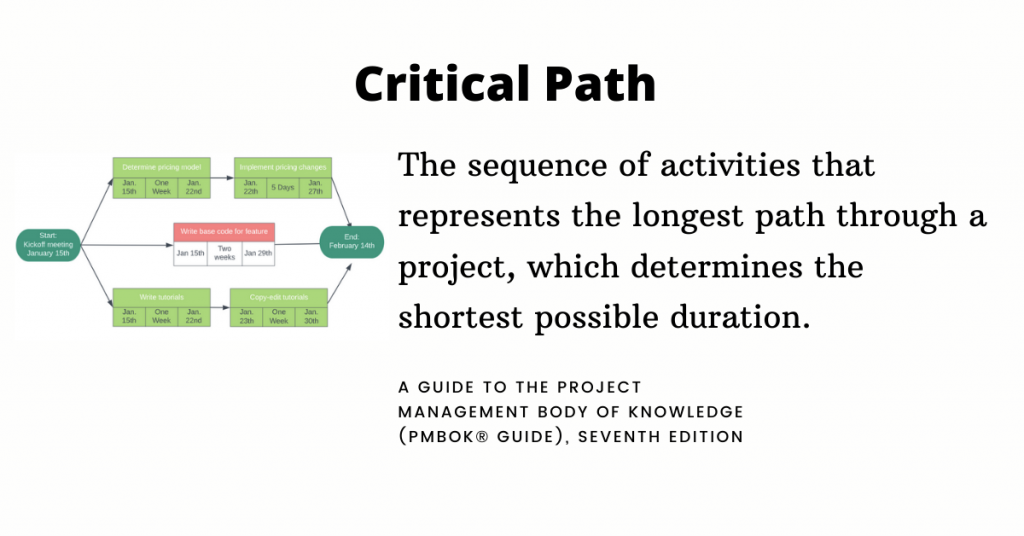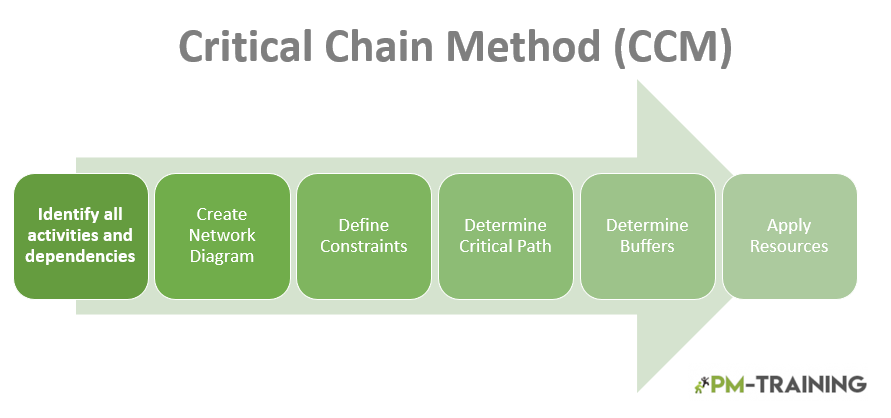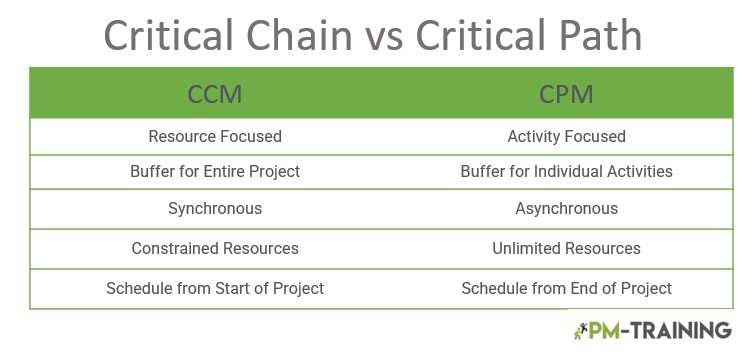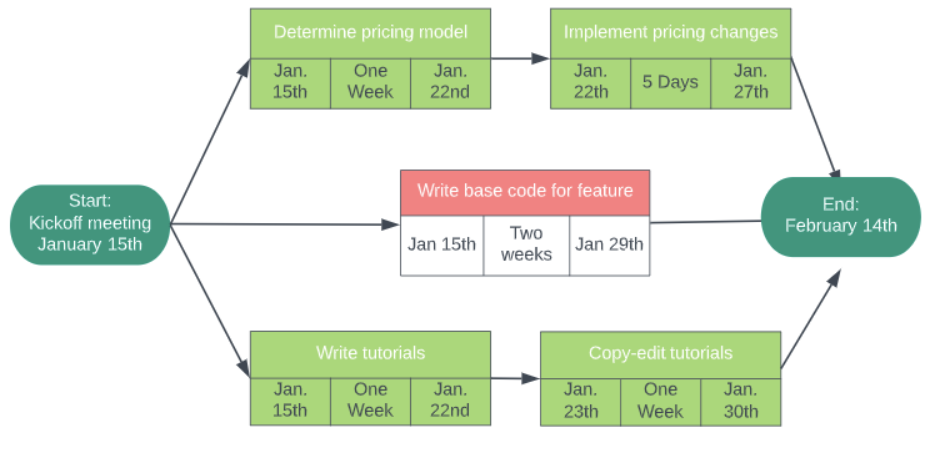The Critical Chain Method (CCM), one of the methods to perform Schedule Management Project Analysis, considers task dependencies, limited resources available, and buffers. This method is used to create the project schedule in cases where resources are limited.
The other method project managers use is the critical path method which is popularized by PMI book the guide to the project management book of knowledge. They suggest creating and tracking your schedule to communicate activity sequence and determine start/finish dates for activities.
The key difference between critical path method vs critical chain is that the critical chain looks at the project schedule from a resource availability perspective and critical path looks at it in terms task estimates. If you have limited resources you should consider critical chain method. If you are working in a project environment with unlimited resources critical path will work better.
What is the Critical Path Method in Project Management?

Planning and project scheduling are critical parts of project management. This is the yellow-brick road that will get you to the beautiful project closure on time. Although a project schedule may seem daunting, it is an essential step in project management planning as it will prevent your project from falling apart quickly.
What is the Critical Chain in Project Management?
CCM allows the Program manager (PM) to schedule all or most critical or high-risk activities at the early stage of the project plan. As a result, it allows critical tasks to be completed quickly and provides buffers for unexpected problems. The PM will also combine multiple tasks into one task and assign one resource for each.
Critical Chain Method Steps

The critical chain method offers three (3) types of buffers:
- Resource buffer is placed just before a critical chain action where a crucial resource is needed. It is used to remind project teams that resources are needed and complete any prior activities.
- Feeding buffer is used as a safety measure in the non-critical chains of a network schedule. It is placed where the path feeds into the critical path.
- Project buffer the sum of all internal buffers added to every project task or activity.
The critical chain recomputes as the project continues to progress. The project’s monitoring and control mainly focus on buffer utilization. As you can see, the critical chain technique considers the basic critical path-based project network and schedule to generate an entirely new timetable.
The critical path project management technique is particularly effective in firms that do not have developed project management procedures. However, the methodology does not encourage multitasking. In turn, the results of applying the critical path methodology to projects with complex schedule networks have proven to hinder the overall project schedule. Furthermore, no standard approach exists for calculating and maximizing project buffers.

Critical Chain vs Critical Path
How to Create a Project Schedule
Project schedules show which order activities should be scheduled to deal with logical relationships. It usually consists of nodes representing activities and arrows indicating the sequence and dependencies.
A project schedule diagram serves to record the sequences and activities in project schedule management. It is also used by other scheduling techniques like the critical path method or the schedule network analysis.
The diagram discusses and identifies the dependencies and sequences in the activities, providing vital stakeholder communication. In other words, it relates the sequences of project activities to the duration and schedule of larger projects.
In such projects, it is more common to use other diagrams and presentation methods, such as the Gantt Diagram, than the project schedule diagram. This diagram can track the leads and lags for an activity. This applies to activity floating and slacks. To identify activities that will take the longest time, you’ll need to use the project schedule diagram, like the one drawn below.

Below is an in-depth explanation of the steps to follow when creating a project schedule diagram.
Step 1: Define Activities
Determining the activities is the first step to creating any project management tool. It is a good idea to prepare the Work Breakdown Structure. This will allow you to get the work package to help you create your activity list.
We believe you have it since you have already defined high-level deliverables, work packages, and the WBS. You can further break down work packages into blocks, which you can use to create estimates and work schedules.
Step 2: Determine activity durations
The first step should be to create a list of activities and determine the work required. The second step involves estimating their time. When determining the duration of an activity, you can use three main methods. There are three main estimation techniques that you can use to determine the duration of activity: analogous, parametric, and 3 points.
Step 3: Create an activity sequence
This is the most important part of the project schedule network. All these steps are building up to sequence. Now that you have calculated the duration of each activity, it is time to create a sequence.
This section will help you identify the predecessors and successors of the activities and their relationship. It will also show you how the sequence should look. Before we can sequence, it is important to identify the dependencies.
After defining the dependencies and understanding them, you can sequence your activities. You will then create your project schedule network on the spreadsheet. In the upper left corner, add three columns and label them Activity, Predecessor, and Duration.
Step 4: Draw the project schedule network diagram
The final step is to create a project schedule network map. To create a network diagram of the project, you can use all the information you have collected. Excel, Visio, or any other program you choose is ideal for creating the diagram.
It is advisable to make a box on the left side of your start box to hold the activities that have no predecessors. Each activity box should have a unique ID and duration. This should be done for all activities. Make sure that the last ones point to your end box. Similarly, do not forget to identify the critical path, the longest route of activities and runs from start to finish.
